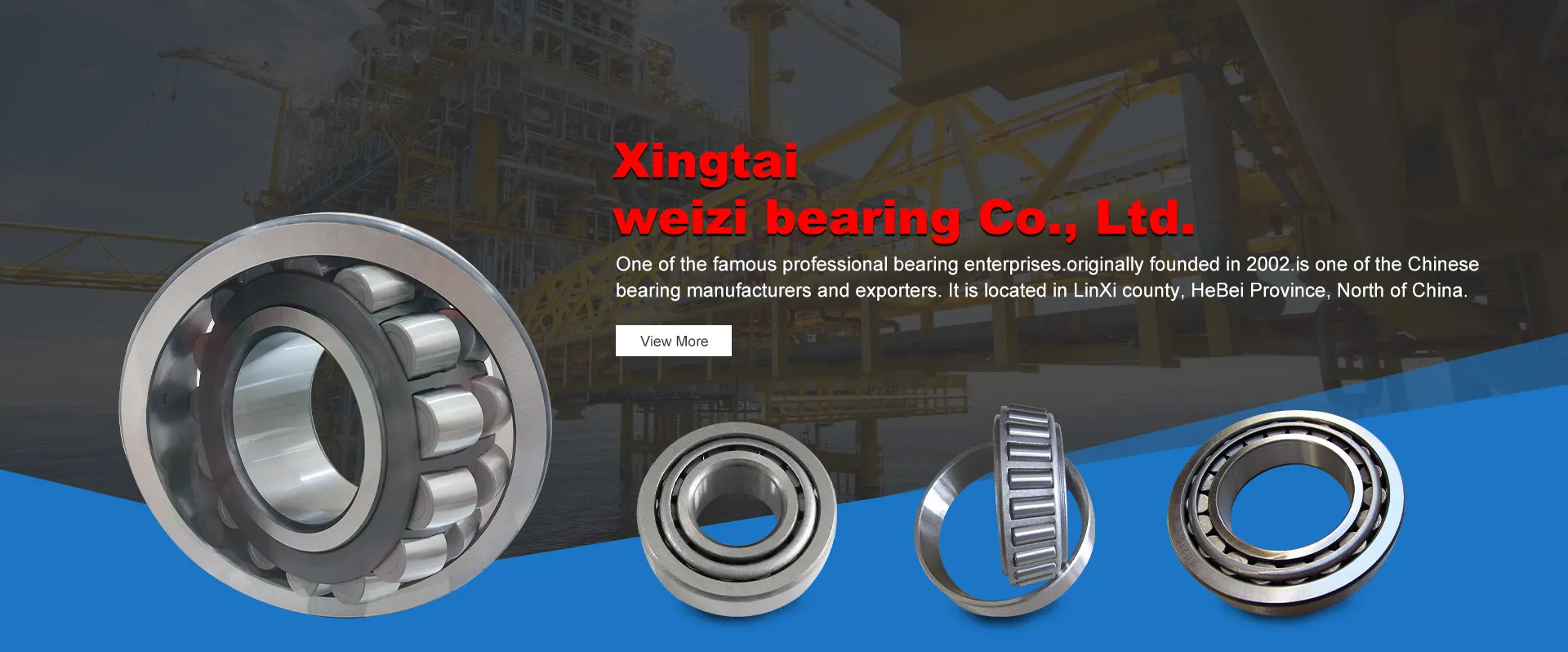
Dec . 09, 2024 16:28 Back to list
Applications and Benefits of Spherical Roller Bearings in Modern Machinery
The Uses and Applications of Spherical Roller Bearings
Spherical roller bearings are a type of rolling-element bearing that allows for angular misalignment and is particularly suited for heavy loads. They are characterized by their unique design, which consists of an inner ring, an outer ring, and a set of spherical rolling elements. This specialization provides numerous advantages, making spherical roller bearings indispensable in various industrial applications.
Key Features
One of the primary features of spherical roller bearings is their ability to accommodate both radial and axial loads. The design includes two rows of rollers, which are held in place by a cage or retainer. This configuration allows the bearing to handle heavy loads while maintaining stability and reducing friction. Moreover, the spherical shape of the outer ring enables the bearing to adjust to misalignment, which is particularly advantageous in rotating machinery that may not always be perfectly aligned.
Industrial Applications
Spherical roller bearings are widely used in many sectors, primarily in heavy machinery and equipment. Below are some of the key industries where these bearings play a crucial role
1. Mining and Quarrying These industries rely heavily on spherical roller bearings due to their robustness and ability to operate under extreme operating conditions. Equipment such as crushers, conveyors, and excavators often utilize these bearings to ensure durability and continuous operation.
2. Construction Machinery Heavy construction equipment, including excavators, loaders, and bulldozers, benefits from the use of spherical roller bearings. Their ability to handle heavy loads and misalignment makes them ideal for applications where machinery experiences substantial stress.
spherical roller bearing uses

3. Manufacturing In manufacturing processes, machinery often operates at high speeds and with varying loads. Spherical roller bearings are used in applications such as gearboxes, pumps, and electric motors, where reliability and performance are crucial.
4. Agriculture The agricultural sector utilizes spherical roller bearings in equipment such as tractors, harvesters, and tillers. These bearings ensure that machinery can withstand harsh environmental conditions and heavy usage, ultimately enhancing productivity.
5. Energy Generation Wind turbines, for example, employ spherical roller bearings to support the rotor shafts. The bearings help manage both radial and axial loads, ensuring smooth operation even in fluctuating wind conditions. Similarly, in hydroelectric plants, these bearings are used in generators and turbines to optimize performance and reduce maintenance costs.
Advantages
One of the main advantages of spherical roller bearings is their ability to handle misalignment. This is especially beneficial in applications where equipment may be subjected to thermal expansion or installation variations. Additionally, they have a high load-carrying capacity, making them suitable for heavy-duty applications. Their design also aids in optimizing lubrication, which enhances longevity and reduces the need for regular maintenance.
Conclusion
In conclusion, spherical roller bearings are a vital component in many industrial applications due to their unique features and reliability. Their ability to accommodate misalignment and support heavy loads makes them suitable for a wide range of industries, from mining to agriculture. As technology advances and industries evolve, the importance of these bearings will likely continue to grow, ensuring efficient and reliable operation of machinery across various sectors. Whether it’s for heavy machinery or high-performance applications, spherical roller bearings will remain a cornerstone of mechanical engineering and industrial reliability.
Latest news
-
Ball Bearing 6001 – Reliable Deep Groove Bearings for Machinery & Industry
NewsNov.24,2025
-
Comprehensive Guide to 6305 2rsr Bearings – Specs, Uses & Vendors
NewsNov.24,2025
-
In-Depth Guide to 6003z Bearing Dimensions: Specs, Applications & Vendors
NewsNov.23,2025
-
Understanding the 6201 Z Bearing - Specifications, Applications, & Future Trends
NewsNov.23,2025
-
Everything You Need to Know About 6001 C3 Bearing – Specs, Uses, and Advantages
NewsNov.22,2025
-
6208 zz Bearing – Key Technical Insights, Applications & Vendor Comparison
NewsNov.22,2025
